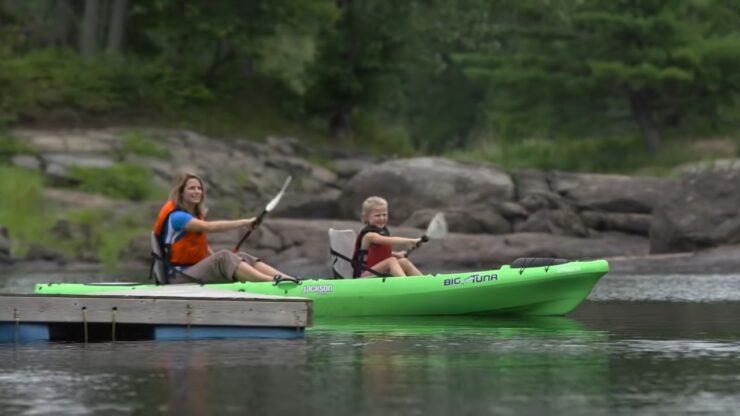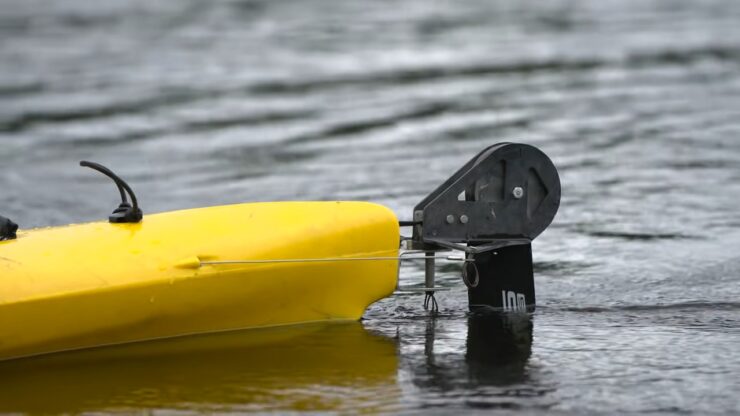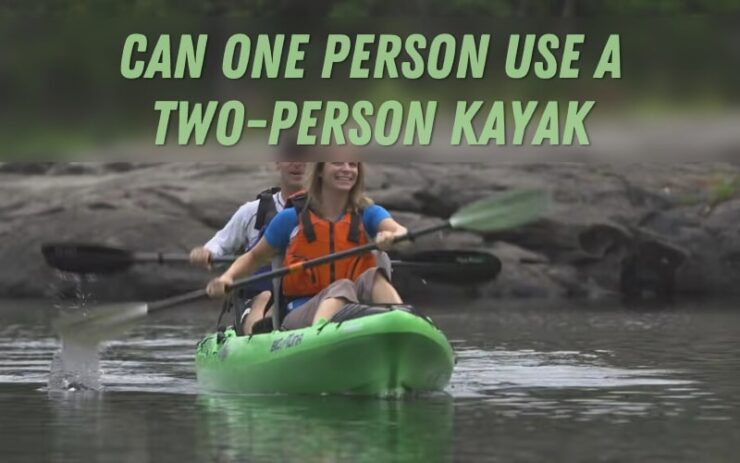As an activity, kayaking is very versatile and it can be done in many different ways. While doing it alone and in your personal time as a hobby is a way to go for most people, having someone to share it with is the ultimate option. Friends and family are the best companions when paddling simply because stuff like this is best experienced in the company of loved ones.
Kayaking with others can be a fun and enjoyable activity for people of all ages and skill levels. It allows individuals to work together and communicate as they paddle through the water, and can also be a good option for groups who want to spend time together on the water.
Table of Contents
ToggleKayaking with Loved Ones
Quality time spent together, teambuilding drills, deepening the bonds and strengthening the relationships… Kayaking with others can give so much. There are several different ways to kayak with friends and family, mainly tandem kayaking, separate kayaks, and group paddles.
- Tandem kayaking: This involves paddling a single kayak with two or more people. Tandem kayaks are typically longer and wider than traditional single-person kayaks, which allows them to accommodate multiple paddlers at once.
- Paddling in separate kayaks: If you have a group of friends who all want to kayak together, you can each paddle your own kayak. This allows each person to have their own space and independence but still allows you to enjoy the activity together.
- Group paddles: Many kayaking organizations and clubs offer group paddles where you can join a group of people for a guided tour or paddling trip. This is a great way to meet new people and explore new areas with the support of a knowledgeable guide.

About Tandem Kayaking
To do this type of kayaking and enjoy some quality time with those closest to you, you need a suitable kayak. The vessel needs to comfortably accommodate two people and allow the equally optimal paddling room. You have probably seen team rowing before. Well, it is much like this except that there is plenty of room for mistakes and unsynchronized strokes until you get on the same page.
Tandem kayaking is a type of kayaking where two or more people paddle a single kayak together, sharing in the good (or bad) times. Tandem kayaks are typically longer and wider than traditional single-person kayaks, which allows them to accommodate multiple people as well as more gear.
One person usually sits in the front of the kayak and paddles while the other sits in the back and steers the kayak. It can be a fun and enjoyable activity for people of all ages and skill levels. It allows individuals to work together and communicate as they paddle through the water, and can also be a good option for couples or families who want to spend time together on the water.
There are several different types of tandem kayaks available, including sit-on-top kayaks, touring kayaks, and recreational kayaks. Sit-on-top kayaks are popular for tandem paddling because they are stable and easy to get in and out of while touring kayaks are designed for longer-distance paddling and are often faster and more efficient. Recreational kayaks are a good option for beginners or those who just want to spend a leisurely day on the water. They should be the choice for anyone looking for an occasional paddle.
When tandem kayaking, it is important to communicate with your paddling partner and make sure that both people are comfortable and able to paddle together. It’s also important to wear a personal flotation device (life jacket) and follow all safety guidelines to ensure a safe and enjoyable paddling experience.
Is It Possible to Do It Alone?

So this is all fine and well, but the actual titular question asks whether it is possible for a single person to use a two-person kayak. The answer is yes, it is more than possible for one person to use a two-person kayak, also known as a tandem kayak, without any issues.
However, since tandem kayaks are typically longer and wider than traditional single-person kayaks, it is probably going to be more difficult to handle for a single person. For obvious reasons and the fact that it is made for more than one paddler, this should not really be a surprise.
If you want to use a tandem kayak as a solo kayak, there are certain things that need to be taken care of first. First of all, you will need to sit in the back of the kayak and paddle using a single-blade paddle.
This can be challenging, as you will have to compensate for the extra length and width of the kayak, and may not be as efficient or maneuverable as a traditional single-person kayak. Paddlers usually move slower and experience greater physical exhaustion when solo paddling a tandem kayak.
If you are interested in using a tandem kayak as a solo kayak and making it a regular activity, it may be a good idea to try it out first on calm, sheltered water before attempting to paddle it in rougher conditions.
It is also important to wear a personal flotation device (PFD) and follow all safety guidelines to ensure a safe and enjoyable paddling experience. Certain kayaks are recommended not to be used alone, only with a buddy. However, it is more of a precaution and serves for the manufacturer to protect themselves, their name, and their reputation.
Conclusion and Takeaways
As you can see, it is very possible to use a two-person kayak as a solo paddler. A lot of kayakers do it. The buddy that you usually go with may be busy, they may not feel like paddling. There may not be a free person who enjoys water sports to go with you. If these things happen or if you simply happen to own a two-person kayak but want to go alone, worry not.
All you will need to do differently is paddle a little harder and longer to achieve the required speed, as well as to make a few more strokes to turn and maneuver. That is all. The carrying and transporting phase will be more challenging too because of the bigger size and more weight of tandem kayaks, but others have done it and so can you.
Meet Maria Alexander, the fearless adventurer steering the ship at KayakPaddling.net. Her mission? To convince you that life’s too short for dry land and that the best stories always start with “So there I was in my kayak…”
Related Posts:
- Heavy Duty Fishing: 11 Best Rods And Reels For Big Fish 2024
- 16 Best Kayak For Beginners 2024 - Kayaking Adventure Gear
- 10 Best Saltwater Fishing Boats - Ultimate Angling Adventure
- 12 Best Fishing Lures Ever 2024 - Baits That…
- 12 Best Kayak GPS 2024 - Find Your Way to Adventure
- 12 Best Truck Bed Hitch Extenders for Kayak 2024 -…












